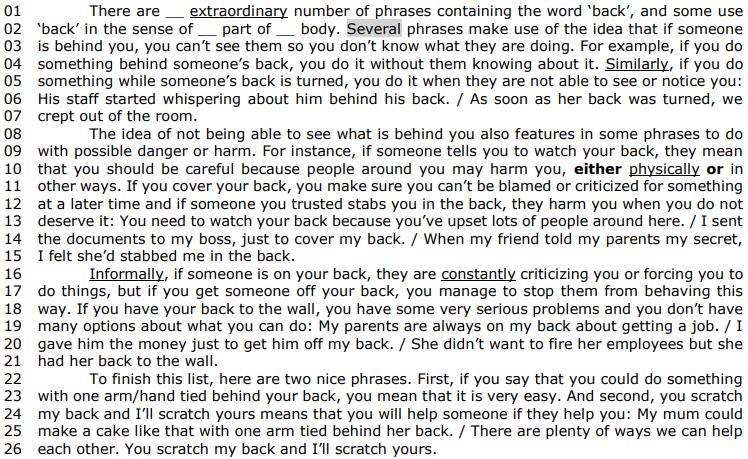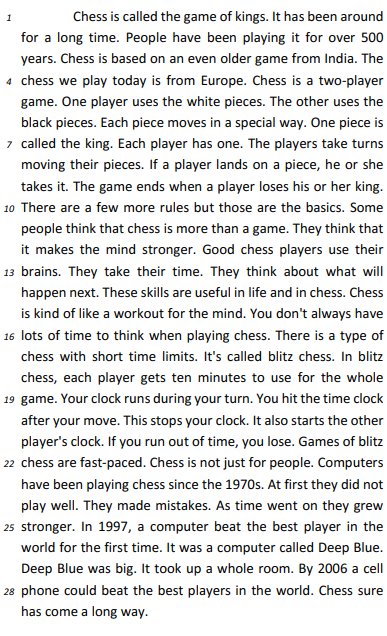Questões de Inglês - Artigos | Articles para Concurso
Foram encontradas 393 questões
Julgue o item subsequente.



Text I
Nurturing Multimodalism
[…]
New learning collaborations call on the teacher as learner, and the learner as teacher. The teacher is a lifelong learner; this is simply more apparent in the Information Age. In instances of best practice, collaborative learning partnerships are forged between and among teachers for strategic, bottom-up, in-house professional development. This allows teachers to share in reflective, on-going, contextualized learning, tailored to their collective knowledge. This sharing also includes the learner as teacher. ELT typically employs learner-centered activities: these can include learners sharing their knowledge of strategic digital literacies with others in the classrooms.
The digital universe, so threatening to adult notions of socially sanctioned literacies, is intuitive to children, who have been socialized into it, and for whom digital literacies are exploratory play. Adults may find new ways of communicating digitally to be quite baffling and confronting of our communicative expertise; children do not. Instant messaging systems, such as MSN, AOL, ICQ, for example, provide as natural a medium for communicating to them as telephones did for the baby-boomer generation. It is not fair for the teacher to treat Information and Communication Technologies as auxiliary communication with learners for whom it is mainstream and primary.
Learning spaces are important. Although teachers seldom have much individual say in the layout of teaching spaces, collaborative relationships may help to encourage integrated digitization, where computers are not segregated in laboratories but are interspersed throughout the school environment. In digitally infused curricula, postmodern literacies do not supplant but complement modern literacies, so that access to information is driven by purpose and content rather than by the media available.
Adapted from: LOTHERINGTON, H. From literacy to multiliteracies in ELT. In:
CUMMINS, J.; DAVISON, C. (Eds.) International Handbook of English Language
Teaching. New York: Springer, 2007, p. 820. Available at:
https://www.researchgate.net/publication/226802846_From_Literacy_to_Multiliter
acies_in_ELT
Choose the sentence in which the article A was also correctly used.

Internet: <www.nortechplus.com>.
Read the following text and answer question.
How do people see disability today?
Some time ago, people’s idea of disability was very distressing, especially towards people with disability and their families. If a child was born with any kind of disability, they _____________ that to many strange taboos, spiritual and traditional beliefs.
Today, disability is seen very differently. Education, information, support services, policy and accessibility efforts by many modern societies have empowered people with disabilities, together with _____ families, to rise to their fullest potential. Children with disability are able to go to school and feel part of society. Many people with disability have grown to become great, successful people.
Ray Charles and Steve Wonder, both blind from childhood, are some of ____________ musicians in the world. Marlee Matlin, ______ lost her hearing from childhood, is a great Standup Comedian and Actress. Chris Burke, a favorite American TV character, and writer, is a person with Down Syndrome. Nick Vujicic is _______ Australian Christian Evangelist and Motivational Speaker. Born ______ 1982 with a rare disorder, characterized by no hands and legs, has lived to inspire millions and continue to empower people.
Disability is part of life. People with disability have potential too, just like people without a disability.
They have the same rights as everyone else and if people with disabilities, families, and society can
work together on policy, we can make society all-inclusive and every person will have a fair chance to
be the best they can be.
(Adapted from: https://goo.gl/fhJZCM. Access: 01/22/2018)

Text for the item.


Internet: <https://hearinginfo.net>
According to the text, judge the item.
In the segment “As a demonstration in 2009, an
audiologist in Dallas, Texas performed a diagnostic
audiometry evaluation on a patient in Preoria, South
Africa” (lines from 16 to 18), there are only three
examples of indefinite article.
Observe as sentenças abaixo:
I - My father always was an honest man.
II - He built a hospital downtown.
III - Today, his hospital is also a university
Assinale a alternativa correta:

Gombrich, E. H. The Story of Art. Phaidon, 16th.
Ed. 1995. pp.65-6, with adaptations.
The fragments “which all creations of a people seem to obey.” (line 4) and which all creations of people seem to obey mean the same and can be used interchangeably.
I’ve seen __________ good films recently. What’s wrong with you? Have you got _________ headache. _________ birds, for example the penguin, cannot fly. I don’t feel very well this morning. I’ve got _______ sore throat.
Observe the following sentences.
I - […] one look at her Instagram account will reveal that she has rock hard.
II - A FBI agent testified Thursday.
III - […] and an honor to work with Andy Lincoln.
IV - […] in the world as a one-parent child.
Choose the correct option according to the underlined items.
Some children is more likely to develop teeth cavities.
In the context above there is mistake related to a or an:
Assinale a alternativa que, correta e gramaticalmente, completa a frase dita por Armstrong.